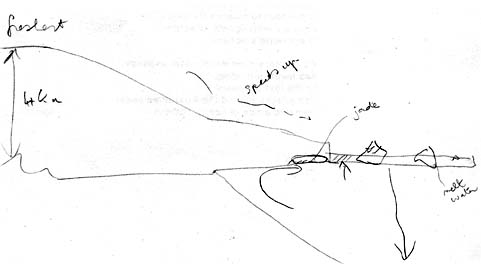Steve Nicol draws a picture explaining the different motions of the Antarctic ice sheet and Antarctic sea ice.
The ice sheet is made up of fresh water. It slowly inches seaward in the form of glaciers. From these, ice bergs calve, and sail off to sea and melt. As glaciers and ice bergs melt, sea levels rise.
When sea ice melts, it does not affect sea levels because it was already a part of the sea to begin with.
…When sea ice forms, most of the salt is pushed into the ocean water below the ice, although some salt may become trapped in small pockets between ice crystals. Water below sea ice has a higher concentration of salt and is more dense than surrounding ocean water, and so it sinks. In this way, sea ice contributes to the ocean’s global “conveyor-belt” circulation. Cold, dense, polar water sinks and moves along the ocean bottom toward the equator, while warm water from mid-depth to the surface travels from the equator toward the poles. Changes in the amount of sea ice can disrupt normal ocean circulation, thereby leading to changes in global climate…
Even a small increase in temperature can lead to greater warming over time, making the polar regions the most sensitive areas to climate change on Earth…

